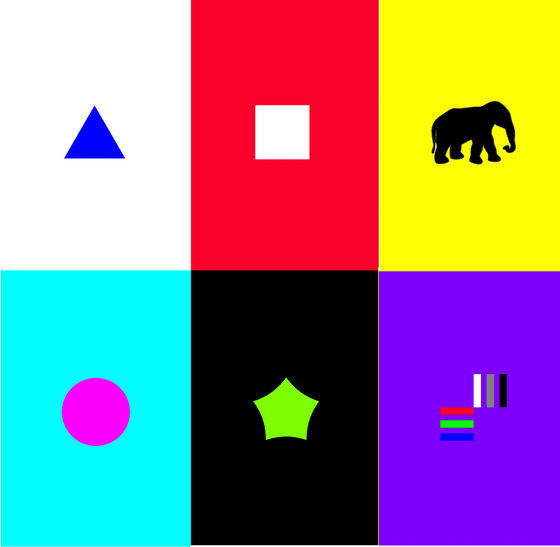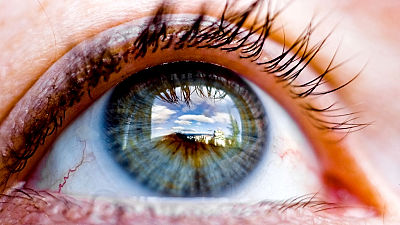How can you see bright and clear images even in 'Aphantasia' where you can't picture people or scenery in your head?

It is said that about 2-5% of the population suffers from a condition called ``
How to See Bright, Vivid Images in Your Mind's Eye
https://photographyinsider.info/image-streaming-for-photographers/

Image Streaming: Think Faster, More Visually, and More Fluidly
https://sourcesoinsight.com/image-streaming/

A joint study published by the University of Exeter, Heriot-Watt University and the University of Edinburgh found that while most people can easily conjure images of familiar landscapes and animals in their heads, some people It is said that there are times when people are unable to visualize their own imaginations and images. Research calls this condition 'aphantasia.' Subsequent research has advanced various analyzes such as pointing out that aphantasia is affected by problems with memory, and papers suggesting that people with aphantasia have different pupillary reactions in their eyes.
What is 'Aphantasia', where you can't imagine people or scenery in your head? -GIGAZINE

By Alice Popkorn
James Somerset, who runs Photography Insider Info, a media outlet that publishes articles about photos and photographers, says he was unable to imagine images in his head until he was nearly 30 years old. For example, if you close your eyes and try to imagine an elephant, you won't see big ears or a long nose, just a dark reddish space. When thinking about composing and composing a photograph, while others imagine a clear image in their mind and then plan the shot or change the composition, Somerset composes in his imagination. I was unable to do so, so I had to use a sketchbook to write down my ideas while actually moving the subject.
Somerset said, ``I only recently learned of the word aphantasia, and I don't know if my symptoms have been officially diagnosed as aphantasia.'' He says he felt that. However, since Mr. Somerset started practicing certain techniques, he has been able to close his eyes and visualize images, and even have 'dreams' that people with aphantasia don't have, and they become more vivid. He said he began to experience what he remembers.

Mr. Somerset apparently learned a technique called `` image streaming '' from instructor Michael Neil when he attended a photographer training course in London. Image streaming was invented by Dr. Win Wenger , a world-renowned authority on education and intelligence research, and is a technique that can be used to improve visual thinking and language recall.
In order to perform image streaming, it is important to first close your eyes to block out unnecessary information. For example, when imagining a ``scenery at a beach,'' rather than providing general information such as ``which coast you are on,'' you can ``feel the thickness of the sand,'' ``hear the sound of the waves,'' or ``smell the smell of the ocean.'' ”, and explain by verbalizing detailed sensory information. It is said that by saying these words out loud one after another, you will be able to think faster and choose words, become better at explaining what you see, and improve your imagination.

Dr. Wenger says, 'Try 10 minutes of image streaming per day for 10 days, what we call the 'Ten/Ten Test.' If this doesn't make any difference, try instead... It's better to do something else. If you can feel some changes, you should be able to continue training and see even better results,' he says of practice. In fact, Mr. Somerset seems to have been able to get good results after about a month of continuous image streaming for 10 minutes once a day. For this reason, Mr. Somerset says that even if it is difficult to explain your imagination aloud at first, or you get stuck because you can't imagine it concretely in the first place, it is important to keep trying and not giving up. I'm pointing it out.
Image streaming has been proposed as an idea to improve the state of aphantasia, as well as a way to think more quickly and creatively. In his blog Sources of Insight, J.D. Meyer, who spent 25 years as director of digital business at Microsoft, writes, ``If only we could think faster, more visually, and more fluidly. What would happen if you could verbalize your ideas in a better way? What if you could imagine new ideas and explain them in detail? What if you could expand your vocabulary and come up with new creative ideas? Is this possible? 'Image streaming' is useful for this purpose.'
Reddit, an American bulletin board news site, has a subcategory called ``

According to Apps4Life, the images that appear when you close your eyes include ``dark noise'' that is simply a refrain of images you normally see, and ``bright noise'' that comes from your thoughts. Of these, it is important to pay attention to and concentrate on bright noises, ``particularly important is the process of relaxing and eliminating ``
Apps4Life offers his own take on a four-step training process. First, recognize the shape below by glancing at it for about 0.25 seconds. Then look away and visualize the shapes and colors of the shapes in detail. Doing this with all six shapes in a very relaxed state will increase your mental focus.

When you can hold a clear image in your head for about 0.5 seconds even if you look away from the figure, proceed to the second stage. The second process, which Apps4Life calls 'image chaining,' involves preparing 20 images from at least five works, such as familiar manga characters. Focus on a specific part of the character's image, such as the head or feet, then look away and visualize that image until it disappears. When the image becomes blurry, return to the image, focus on other parts of the character, look away, and repeat. This allows you to chain visuals in your brain, expanding your field of vision and improving your ability to concentrate and form images in your brain.
As a next step, instead of focusing on one body part of the character, you recognize multiple body parts, then look away and visualize the entire image. This corresponds to 'projection from short-term memory.' Once you can do that well, think of another character from the manga or anime that that character appears in. This allows you to train 'visual projection from long-term memory.'
Once you can project the visuals into both your short-term and long-term memory, move on to the final training. Here, I will make a list of 100 manga and anime characters that I know and save images of 50 of them. For the first 50 people on your list, look at the names along with the images, look away from the list, and think of the names one letter at a time. For the latter half of the 50 people, they just look at the text without searching for images, and in the same way, they look away and think of the character's name. Again, it accesses both short-term and long-term memory, leading to quick recall of credentials from text information.
Unlike the training process recommended by Dr. Wenger and Mr. Somerset, Apps4Life says, ``Although it may be tempting to close your eyes to visualize, every part of this training requires you to do it without closing your eyes.'' There is.” Apps4Life claims that by acquiring the ability to project your thoughts with your eyes open, you can reach ``Profantasia,'' which increases your concentration and performance.
Related Posts:
in Note, Posted by log1e_dh






